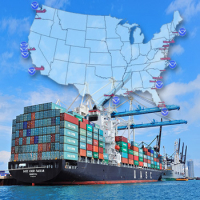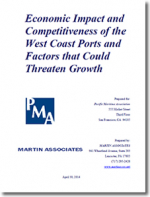Economic Impact and Competitiveness of the West Coast Ports and Factors that Could Threaten Growth
As demonstrated in this white paper, the West Coast ports are a critical economic engine for the U.S. economy.
The West Coast port range is a major gateway of international waterborne trade between the United States and Asia.
The ports located in California, Oregon and Washington provide the key linkage between the United States consumer, industrial and agricultural sectors and Asia.
As the economies of Asia have developed, the importance of the West Coast ports becoming an economic catalyst has continued to increase.
Not only does the growing international Trans‐Pacific trade provide jobs and economic stimulus in the West Coast region, but these port gateways and the cargo they handle support the industrial, retail and agricultural sectors throughout the United States. The continued success of these ports is essential to the stability and growth of the entire United States economy.
It is the purpose of this discussion paper to highlight the economic importance of the West Coast port range, both regionally and nationally, to provide an overall analysis of the U.S. containerized cargo market, and to document the structural logistics changes that have occurred in this industry since the West Coast shutdown in September, 2002.
In light of the dynamics that have occurred in the U.S. container market since the 2002 shutdown, an assessment of the potential impacts of a work stoppage related to the 2014 contract negotiations is also provided.
As demonstrated in this white paper, the West Coast ports are a critical economic engine for the U.S. economy. Furthermore, the port activity at the West Coast ports represents a significant economic impact to the states in which they are located in terms of job creation and economic value.
What’s Related


Favorites





